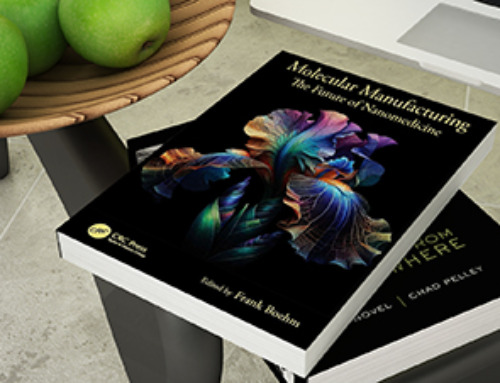Harnessing renewable energy has been a prominent strategy to promote environmental conservation. Butterfly wings exhibit many unique properties, such as their striking wing coloration, light absorption mechanisms, and responses to various stimuli. For many years researchers have tried to replicate the intricate features of nature to develop artificial functional materials such as sensors, robotics, photovoltaics, and many more.
How have Butterfly Wings Inspired Scientists?
Butterflies are lepidopteran insects that have always intrigued researchers. Initially, scientists were more interested in the biological characteristics of a butterfly; for instance, they pointed out that chitin is the main component of butterfly wing scales. Some of the most intriguing characteristic features of these scales include interchangeable high and low refractive indices and their dimension ranges of a few hundred nanometers.
Butterfly wing comprises one bilayer scale of fused cover scales in the upper layer and small fused ground scales in the lower layer. Numerous nanostructured wing scales are arranged in an uneven, overlapping ordering, ridge ornamentation, and have periodicities between 140 and 2000 nm.
Microarchitecture of the wings revealed that each scale has a distinct shape, parallel or inclined arrangement, pigmented or unpigmented, concave or hemispherical curvature, and porous lumen. These arrangements are responsible for visible light scattering.
Solar Energy and Butterfly Wings
At present, there is a high demand for renewable sources of energy, such as solar. Despite being renewable, solar energy has not yet gained much popularity owing to some significant constraints that include its high cost.
Once harvested, this source has to be immediately used as storing solar power requires installing large and expensive batteries. Additionally, solar energy is inconsistent and can be used only during the daytime.
One of these avenues has led scientists to take inspiration from the nanostructures of butterfly wings.
An example of the technologies associated with harvesting energy from solar light is by using Solar photovoltaic (Solar PV), which converts sunlight directly into electricity using solar PV cells. The performance of photovoltaic cells is dependent on the surface of the nanomaterial used, e.g., titanium dioxide.
Researchers have developed a second-generation solar PV cell, which is a thin-film solar cell comprised of layers of micron-think photon-absorbing materials deposited on a flexible substrate.
Although this technology is cost-effective, it is not as efficient as regular solar PV cells. A way to overcome this shortcoming has been explored by studying how a butterfly’s wings absorb sunlight.
Some of the unique properties of butterfly wings that have helped improve solar technologies are their large surface area, porous architectures, stimuli responsiveness, and light manipulation.

Image Credit: Matee Nuserm/Shutterstock.com
A group of researchers at the Karlsruhe Institute of Technology (KIT) have recently reported the development of solar cells based on the nanostructure of butterfly wings, which has increased the rate of light absorption by up to 200%.
The “common rose” butterfly or Pachliopta aristolochiae, is commonly found in South and Southeast Asia. This species of butterfly has predominantly black wings with some white and red spots.
The scales present on the wings not only provide protection but also absorb sunlight and turn it into heat while the scales capture the solar energy over a wide range of angles and wavelengths and maintain the body temperature.
Scientists studied the wings of this butterfly under an electron microscope and developed a three-dimensional model of the nanostructure of the wings. They found that the wings were covered with randomly spaced holes of about less than one micrometer wide, making the wings lighter and also scattering the sunlight striking them, which enables maximum absorption of sunlight throughout the day.
Thin-Films Inspired by Wings
Using this concept, the research team developed a similar thin-film structure comprised of a layer of tiny holes on top of a silicon base. Interestingly, they found this material could roughly absorb twice as much light as other designs.
Scientists are optimistic that this design can improve the efficiency of the thin-film cells significantly and would greatly impact the solar industry.
Comparative studies have considered the development of organic solar cells using silver butterfly wings architecture. These solar cells comprise a one-dimensional periodic array of plasmonic butterfly-wing shaped nanostructures which increase light absorption, scattering, and trapping of the incident optical radiation at multiple wavelengths. The elevated light scattering promotes increased path length of light and improved light intensity to the overall surface area.
Scientists believe that these advancements could bring about a major change in the utilization of solar energy. An increase in the use of this energy could help protect the environment from various forms of pollution and resist rapid climatic changes.
News
Two New Books From Frank Boehm, NA Founder – To be Released Dec. 2025
Molecular Manufacturing: The Future of Nanomedicine This book explores the revolutionary potential of atomically precise manufacturing technologies to transform global healthcare, as well as practically every other sector across society. This forward-thinking volume examines [...]
What could the future of nanoscience look like?
Society has a lot to thank for nanoscience. From improved health monitoring to reducing the size of electronics, scientists’ ability to delve deeper and better understand chemistry at the nanoscale has opened up numerous [...]
Scientists Melt Cancer’s Hidden “Power Hubs” and Stop Tumor Growth
Researchers discovered that in a rare kidney cancer, RNA builds droplet-like hubs that act as growth control centers inside tumor cells. By engineering a molecular switch to dissolve these hubs, they were able to halt cancer [...]
Platelet-inspired nanoparticles could improve treatment of inflammatory diseases
Scientists have developed platelet-inspired nanoparticles that deliver anti-inflammatory drugs directly to brain-computer interface implants, doubling their effectiveness. Scientists have found a way to improve the performance of brain-computer interface (BCI) electrodes by delivering anti-inflammatory drugs directly [...]
After 150 years, a new chapter in cancer therapy is finally beginning
For decades, researchers have been looking for ways to destroy cancer cells in a targeted manner without further weakening the body. But for many patients whose immune system is severely impaired by chemotherapy or radiation, [...]
Older chemical libraries show promise for fighting resistant strains of COVID-19 virus
SARS‑CoV‑2, the virus that causes COVID-19, continues to mutate, with some newer strains becoming less responsive to current antiviral treatments like Paxlovid. Now, University of California San Diego scientists and an international team of [...]
Lower doses of immunotherapy for skin cancer give better results, study suggests
According to a new study, lower doses of approved immunotherapy for malignant melanoma can give better results against tumors, while reducing side effects. This is reported by researchers at Karolinska Institutet in the Journal of the National [...]
Researchers highlight five pathways through which microplastics can harm the brain
Microplastics could be fueling neurodegenerative diseases like Alzheimer's and Parkinson's, with a new study highlighting five ways microplastics can trigger inflammation and damage in the brain. More than 57 million people live with dementia, [...]
Tiny Metal Nanodots Obliterate Cancer Cells While Largely Sparing Healthy Tissue
Scientists have developed tiny metal-oxide particles that push cancer cells past their stress limits while sparing healthy tissue. An international team led by RMIT University has developed tiny particles called nanodots, crafted from a metallic compound, [...]
Gold Nanoclusters Could Supercharge Quantum Computers
Researchers found that gold “super atoms” can behave like the atoms in top-tier quantum systems—only far easier to scale. These tiny clusters can be customized at the molecular level, offering a powerful, tunable foundation [...]
A single shot of HPV vaccine may be enough to fight cervical cancer, study finds
WASHINGTON -- A single HPV vaccination appears just as effective as two doses at preventing the viral infection that causes cervical cancer, researchers reported Wednesday. HPV, or human papillomavirus, is very common and spread [...]
New technique overcomes technological barrier in 3D brain imaging
Scientists at the Swiss Light Source SLS have succeeded in mapping a piece of brain tissue in 3D at unprecedented resolution using X-rays, non-destructively. The breakthrough overcomes a long-standing technological barrier that had limited [...]
Scientists Uncover Hidden Blood Pattern in Long COVID
Researchers found persistent microclot and NET structures in Long COVID blood that may explain long-lasting symptoms. Researchers examining Long COVID have identified a structural connection between circulating microclots and neutrophil extracellular traps (NETs). The [...]
This Cellular Trick Helps Cancer Spread, but Could Also Stop It
Groups of normal cbiells can sense far into their surroundings, helping explain cancer cell migration. Understanding this ability could lead to new ways to limit tumor spread. The tale of the princess and the [...]
New mRNA therapy targets drug-resistant pneumonia
Bacteria that multiply on surfaces are a major headache in health care when they gain a foothold on, for example, implants or in catheters. Researchers at Chalmers University of Technology in Sweden have found [...]
Current Heart Health Guidelines Are Failing To Catch a Deadly Genetic Killer
New research reveals that standard screening misses most people with a common inherited cholesterol disorder. A Mayo Clinic study reports that current genetic screening guidelines overlook most people who have familial hypercholesterolemia, an inherited disorder that [...]





















